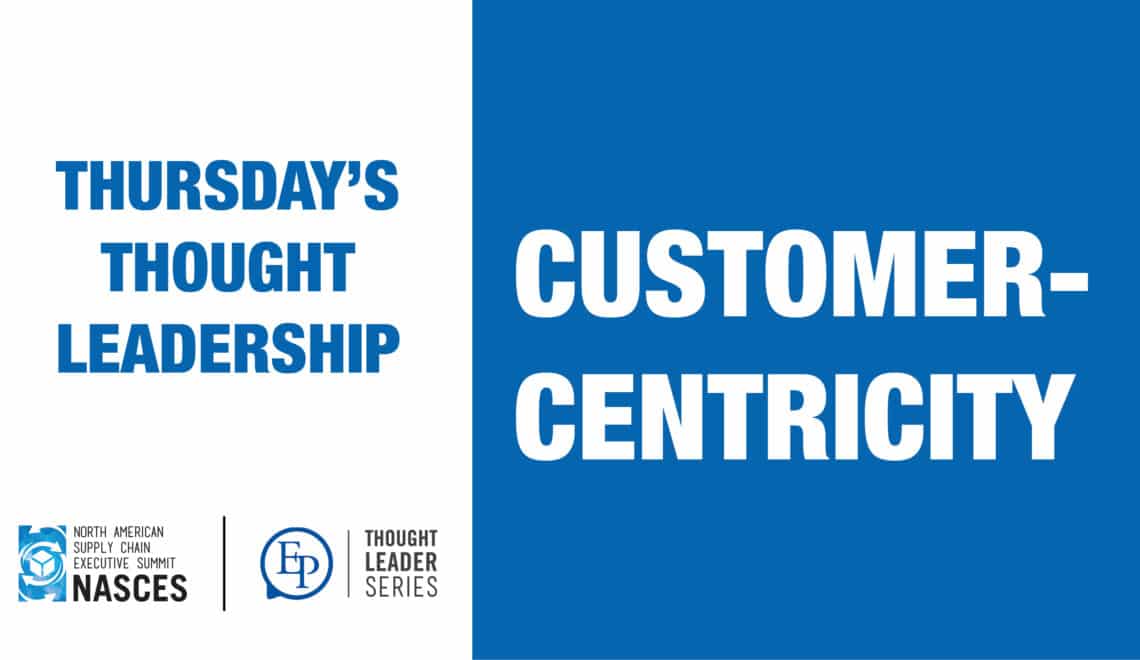
Last September at the North American Supply Chain Executive Summit, held virtually, Shay Scott, Executive Director, Global Supply Chain Institute, University of Tennessee moderated a panel discussion with Daniel Myers, the Retired EVP of Integrated Supply Chain of Mondelēz International, and Greg Smith, EVP, Supply Chain for Walmart U.S., on “The Supply Chain of the Future and Behaviors that Drives Excellence.” The whole conversation is worth watching, but today we want to pull out a quote about how Walmart is breaking down internal silos to better meet the needs of its customers:
“The expectations of the customer are so high, and rightfully so, they should be. That’s how we win. We satisfy those customers and live up to their expectations,” Greg Smith said. “We have a supply chain that’s large, that’s been built over many years. Some of it has been systems that have been incrementalized. For us it really is getting the end-to-end connectivity, and getting the data flowing accurately across the overall value chain. And when I say value chain, I don’t mean just throughout the distribution center, but all the way from the planning to the deployment.
“That’s two things we spend a great deal of time on now: The enablement around that capability and the systems and processes. The approach is to break down historical boundaries where we used to think we needed a group to advise, a group to plan, a group to store, a group to ship, a group to sell. The reality is you need to connect them all because that data flow is so important. We’ve done it incrementally before, but now we are trying to achieve it in a step function.”
Here are a few questions to ask about yourself and your business:
- How many different departments are involved in fulfilling a customer’s order in your organization from start to finish? How well do the ends of your value chain communicate and share information? Has the nature of your value chain changed within your time at the company, and if not, why not?
- Now Walmart’s supply chain is a world-class organization almost by definition, and they have the resources to make big moves quickly. If you wanted to transform your own processes based on Walmart’s example, where would you start? What resources would you need, and who would you need on your team to get it done?
- Whether you have already been as transformative as Walmart, or you are just at the start of your journey, what is your end goal? What are your metrics for success? How will you gauge progress along the way, and what red flags would you be looking out for that would signal a major course correction?
- Is there someone you would want to talk to about all this before you got started? Who is that person, and do they know you view them as the go-to expert for this kind of project?
—
Geoff Micks
Head of Content & Research
Executive Platforms
Geoff joined the industry events business as a conference producer in 2010 after four years working in print media. He has researched, planned, organized, run, and contributed to more than a hundred events across North America and Europe for senior leaders, with special emphasis on the energy, mining, manufacturing, maintenance, supply chain, human resources, pharmaceutical, food and beverage, finance, and sustainability sectors. As part of his role as Head of Content & Research, Geoff hosts Executive Platforms’ bluEPrint Podcast series as well as a blog focusing on issues relevant to Executive Platforms’ network of business leaders.
Geoff is the author of five works of historical fiction: Inca, Zulu, Beginning, Middle, and End. The New York Times and National Public Radio have interviewed him about his writing, and he wrote and narrated an animated short for Vice Media that appeared on HBO. He has a BA Honours with High Distinction from the University of Toronto specializing Journalism with a Double Minor in History and Classical Studies, as well as Diploma in Journalism from Centennial College.













